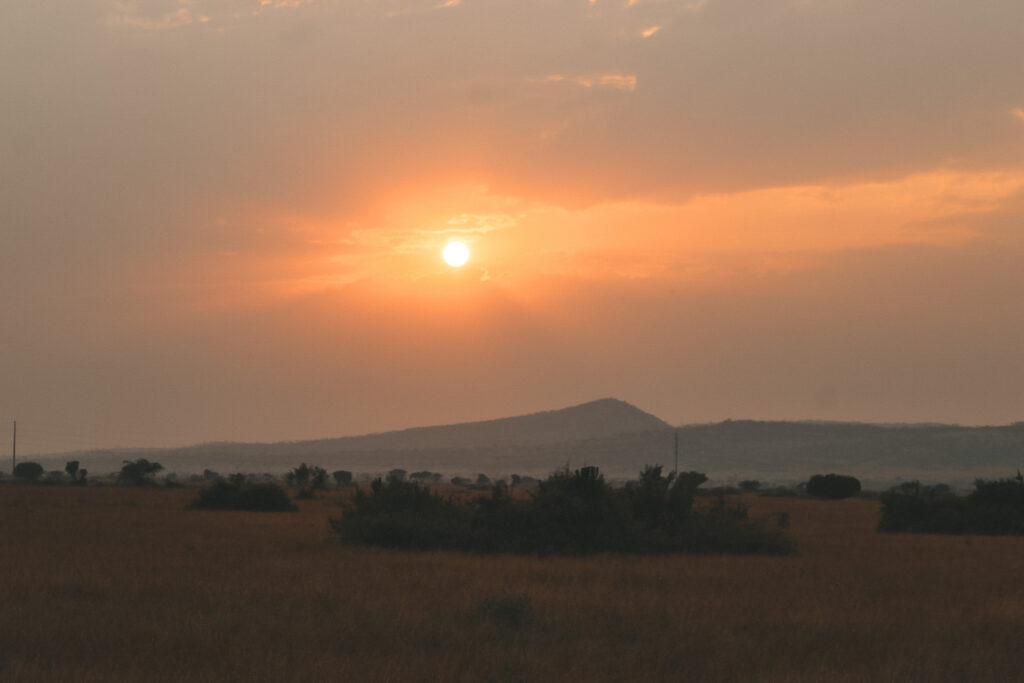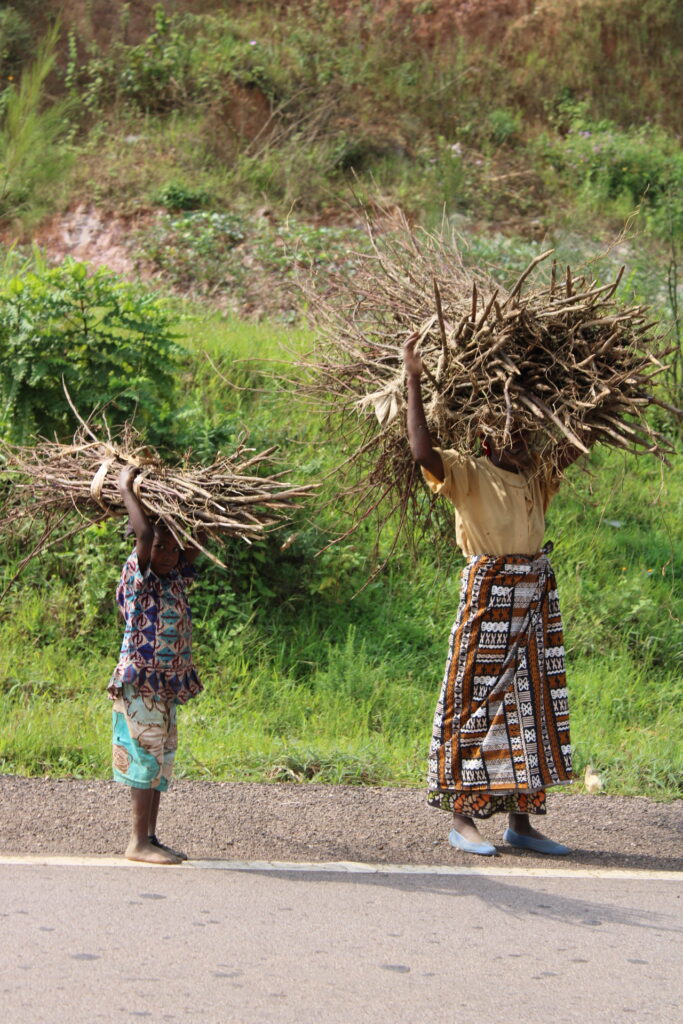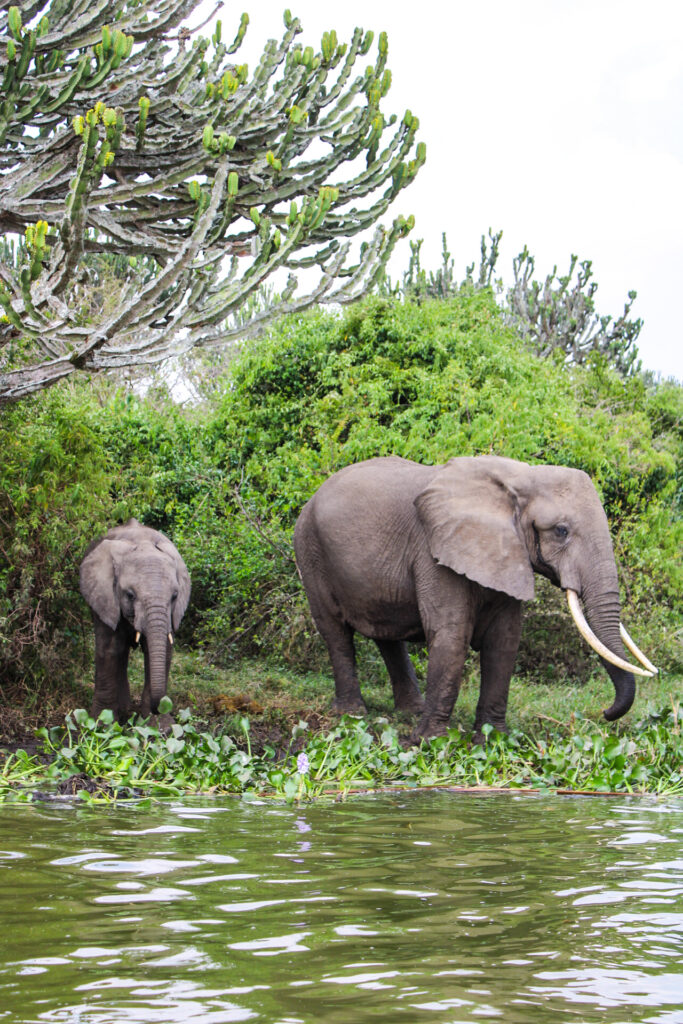Uganda, located in East Africa, is known as the “Pearl of Africa” for its natural beauty and diverse wildlife. It’s been on my bucket list for 6 looooong years, and I fell in love with it as soon as I landed! My main dream was to see the Gorillas in their natural habitat, and if I tell you I fell in love with this country AND I got emotional every single day, I know, you won’t believe me. Before to give you the Itinerary of Uganda and Rwanda, let’s talk about what you need.

First thing first – what do you need for Uganda and Rwanda travel itinerary?
Visa and Travel Requirements: Visitors to Uganda will need a valid passport and a tourist visa. You can apply for a visa online or at the Ugandan embassy in your country or on arrival at Entebbe International Airport. Mandatory yellow fever vaccine and make sure to check for any COVID-related travel restrictions and requirements before your trip.
Currency: The official currency in Uganda is the Ugandan shilling (UGX). US dollars and euros are accepted in cash, but it’s always a good idea to have some local currency on hand. Credit cards are accepted too, but it’s not very easy, especially in the different villages, to find a card machine. Don’t be stubborn like myself! I didn’t bring enough cash with me and I couldn’t do much shopping!
Clothing recommendations for 10 days Uganda and Rwanda itinerary:
- Long-sleeved shirts and pants (no no no no bright colours to not disturb the gorillas). It’s recommended to wear long-sleeved shirts and pants to protect your skin from stinging nettles, thorns, and other vegetation you might encounter during the trek.
- Waterproof hiking boots. You’ll be walking through thick vegetation, so you’ll need comfortable, waterproof hiking boots with good ankle support to protect your feet.
- Gloves. You may need gloves to protect your hands from nettles and other thorny plants.
- Rain jacket. Weather in the forest is so unpredictable. It’s important to be prepared for rain.
- Hat.
- Warm layer. Even if it’s warm when you start the trek, the weather can change quickly in the mountains. The temperature drops at night as well.
- Insect repellent WITH NO SCENT. The forest is home to many insects, so it’s a good idea to bring insect repellent to avoid getting bitten. Some of these loooovely creatures looooove the smell of the repellent, so choose one without scent.
- Backpack of course.
- Water bottle.
Best Time to Visit is during the dry season, between December and February, and again June and August. Uganda’s weather is generally pleasant all year round. The best time to visit for gorilla trekking is during the dry season from June to August and December to February. The rainy season, from March to May and September to November, is a good time to visit for bird watching and other wildlife viewing.

Let’s move to the fun part – my 10 days Uganda and Rwanda itinerary!
Day 1 and 2: Kampala
I started my trip in Kampala. Kampala is the capital and largest city of Uganda, located in the central region of the country. It’s a vibrant and bustling city with a rich cultural heritage, vibrant nightlife, and many historical and cultural attractions.
My first accommodation for 2 nights was “Forest Cottages”, an eco-friendly boutique hotel, designed in harmony with the environment. Aiming to fully immerse guests in a forest experience. Located in a quiet part of the suburb of Bukoto.


Here are some things to do and see in Kampala:
- The Uganda Museum is the oldest and largest museum in Uganda, featuring exhibits on the country’s cultural and natural history.
- Kasubi Tombs: The Kasubi Tombs are the burial grounds of the kings of Buganda, a kingdom in central Uganda. The tombs are a UNESCO World Heritage Site and offer a glimpse into the history and culture of the Buganda people.
- Namugongo Martyrs Shrine: The Namugongo Martyrs Shrine is a Catholic pilgrimage site where 22 Catholic martyrs were killed in 1886 for refusing to renounce their faith.
- Ndere Cultural Centre: The Ndere Cultural Centre is a performance space that showcases traditional Ugandan music, dance, and drama.
- Owino Market: Owino Market is one of the largest and busiest markets in Uganda, offering a wide range of goods from food to clothing and electronics.
- Gaddafi National Mosque: The Gaddafi National Mosque is one of the largest mosques in Africa, with a capacity of up to 15,000 worshipers. The mosque offers stunning views of Kampala and the surrounding area.
- Kabaka’s Palace: The Kabaka’s Palace is the official residence of the king of Buganda and offers a glimpse into the history and culture of the Buganda people.
- Craft Markets: Kampala is home to many craft markets, such as the Buganda Road Craft Market and the National Theatre Craft Market, where you can purchase traditional Ugandan crafts, including baskets, jewelry, and textiles.
Kampala is also known for its vibrant nightlife, with many bars and nightclubs in areas such as Kololo and Kabalagala. The city offers a mix of local and international cuisine, with many restaurants offering traditional Ugandan dishes. Ugandan cuisine is diverse and flavourful, with many dishes featuring stews, cassava, beans, and plantains. Popular dishes include matoke (cooked and mashed green bananas), chapati (flatbread), and rolex (a Ugandan version of a burrito).

Day 3: Kampala to Fort Portal
Fort Portal is a town located in western Uganda, nestled in the foothills of the Rwenzori Mountains, also known as the Mountains of the Moon. It’s a popular destination for tourists who want to explore the natural beauty of Uganda, as well as its rich cultural heritage.
I wanted to challenge myself for a couple of nights, but not too much (*sarcastic laugh*) and I booked 2 nights glamping at Kluges Guest Farm. Simple furnished tents with shared bathrooms in the middle of the forest! The accommodation is in the perfect location to see:
To save you time I’ve created a very detailed and easy travel and food guide with a total of 11 days itinerary break down.
Check the full itinerary on my detailed guide for all the info you need and you next planned trip.





0 Comments